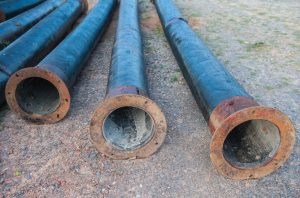 In recent years, water systems have been faced with challenges that are unique to modern times. Our nation’s buried infrastructure is reaching a critical juncture in that it is nearing or has reached the end of its useful life, or is in dire need of replacement due to the presence of lead. At the same time, climate change is affecting supplies, while a burgeoning population is creating a larger demand. And as we increase our knowledge about the dangers of additional contaminants in our drinking water, utilities are saddled with increased regulations that require strict compliance by specific deadlines. Obtaining compliance often requires extensive upgrades or completely new infrastructure, all of which come with a high price tag.
In recent years, water systems have been faced with challenges that are unique to modern times. Our nation’s buried infrastructure is reaching a critical juncture in that it is nearing or has reached the end of its useful life, or is in dire need of replacement due to the presence of lead. At the same time, climate change is affecting supplies, while a burgeoning population is creating a larger demand. And as we increase our knowledge about the dangers of additional contaminants in our drinking water, utilities are saddled with increased regulations that require strict compliance by specific deadlines. Obtaining compliance often requires extensive upgrades or completely new infrastructure, all of which come with a high price tag.
And therein lies the problem. While water systems are facing such a complex set of challenges that require significant expenditure, available capital is quickly drying up. Water systems are seeing their budgets slashed while operations and maintenance costs soar. In addition, funding sources have been dwindling, and President Trump’s 2018 budget aims to slash them even further. In fact, Trump’s proposed 2018 budget completely eliminates the United States Department of Agriculture (USDA) Rural Development Water and Waste Disposal Loan and Grant Program. This program “provides funding for clean and reliable drinking water systems, sanitary sewage disposal, sanitary solid waste disposal, and stormwater drainage to households and businesses in rural areas who are not otherwise able to obtain commercial credit on reasonable terms.”1 In other words, lower income rural communities who fully rely on USDA Rural Development grants to fund their water system improvements will no longer have a source of federal funding.
 The proposed 2018 budget also budget cuts the Environmental Protection Agency (EPA) by 31%, or $5.7 billion. The EPA provides funding to water systems through its Drinking Water State Revolving Fund (DWSRF) and Clean Water State Revolving Fund (CWSRF) programs, both of which “provide communities a permanent, independent source of low-cost financing for a wide range of water quality infrastructure projects.”2 Considering that almost all spending on critical infrastructure such as drinking water, wastewater, and transportation is provided by the public sector, these cuts are expected to make a huge impact on available funding for critical water infrastructure projects.
The proposed 2018 budget also budget cuts the Environmental Protection Agency (EPA) by 31%, or $5.7 billion. The EPA provides funding to water systems through its Drinking Water State Revolving Fund (DWSRF) and Clean Water State Revolving Fund (CWSRF) programs, both of which “provide communities a permanent, independent source of low-cost financing for a wide range of water quality infrastructure projects.”2 Considering that almost all spending on critical infrastructure such as drinking water, wastewater, and transportation is provided by the public sector, these cuts are expected to make a huge impact on available funding for critical water infrastructure projects.
Because working capital is becoming so scarce, it is critical that water systems manage their assets with an eye on efficiency and systematic planning. Asset management is arguably one of the most important strategies for effectively maintaining utilities today and critical to the health and maintenance of water systems. Key components of a utility asset management plan include performing an inventory and condition assessment of the system’s assets, defining level of service goals, identifying critical assets, establishing life cycle costs, and developing a long-term funding strategy. In other words, a successful asset management plan requires a thoughtful, systematic approach that provides for the rehabilitation and replacement of assets over time, while also maintaining an acceptable level of service for existing assets.
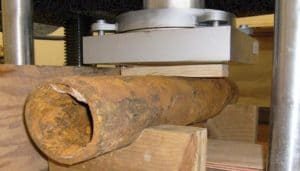
Today’s stringent budgets demand precise efficiency and cost-effectiveness, and determining which assets should be prioritized can be a challenge. It is no longer economically feasible to create an asset replacement schedule based solely on life cycle and critical components; rather, utilities today must pinpoint assets that are most in need of repair or replacement in order to stretch existing capital and justify new budget requests.
Capital efficiency planning helps to do just that. Our proprietary Capital Efficiency Plan™ (CEP) methodology combines the concepts of asset management, hydraulic modeling, and system criticality into a customized, comprehensive report that provides utilities with a roadmap for future repair and replacement. The report includes database and GIS representation for each pipe segment within their underground piping system, prioritizes water distribution system piping improvements, and provides estimated costs for water main replacement and rehabilitation. Because each water system has unique characteristics and challenges, our CEP includes a workshop with knowledgeable field staff and managers for each project that helps to fill in data gaps, correct incorrect records, and identify specific issues and critical components that are custom to the system. The results of the workshop provide significant value by improving the quality of the asset data and the accuracy of the hydraulic model. Because the CEP utilizes a highly structured, detailed, and targeted approach, utilities can confidently justify the costs of repairing or replacing those assets most in need of repair or replacement when preparing annual budgets. Our CEPs have assisted numerous utilities throughout New England by providing a practical and easily understandable plan to critical asset repair and replacement, as well as an advantage when it comes to procuring funding. The same approach can be applied to above ground assets as well as wastewater and stormwater systems.

Increasing regulations, climate change, shrinking budgets, dwindling supply, and population growth — these are all challenges that affect the financial capacity of today’s utilities. And with the proposed budget cuts under the Trump administration, water systems will feel even greater fiscal pressure. Competition for SRF funding will intensify, and utilities will be required to definitively justify the reason for their funding request. By combining asset management with hydraulic modeling and system criticality, our Capital Efficiency Plans™ can help utilities to maintain the health and viability of their water systems today so that they can continue to provide safe, clean drinking water tomorrow, and well into the future.
1 rd.usda.gov
2 epa.gov

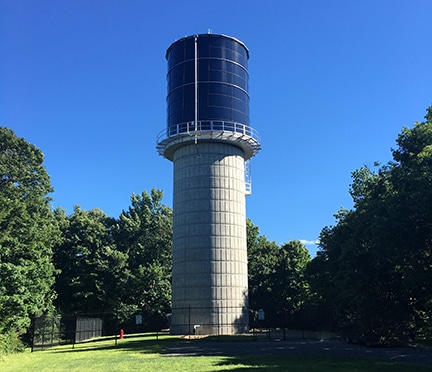
 There are few – very few – issues that have as much bipartisan support today as investing in our nation’s infrastructure. We all have experienced dodging potholes while we drive, waiting for a bus that feels like it is never going to come, or being packed like sardines in an overcrowded airport for an interminable amount of time. We have all read the stories about the
There are few – very few – issues that have as much bipartisan support today as investing in our nation’s infrastructure. We all have experienced dodging potholes while we drive, waiting for a bus that feels like it is never going to come, or being packed like sardines in an overcrowded airport for an interminable amount of time. We have all read the stories about the 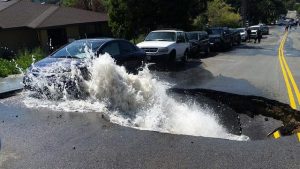

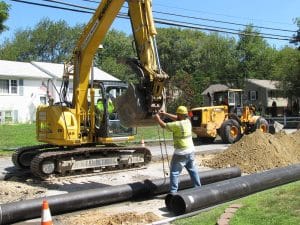
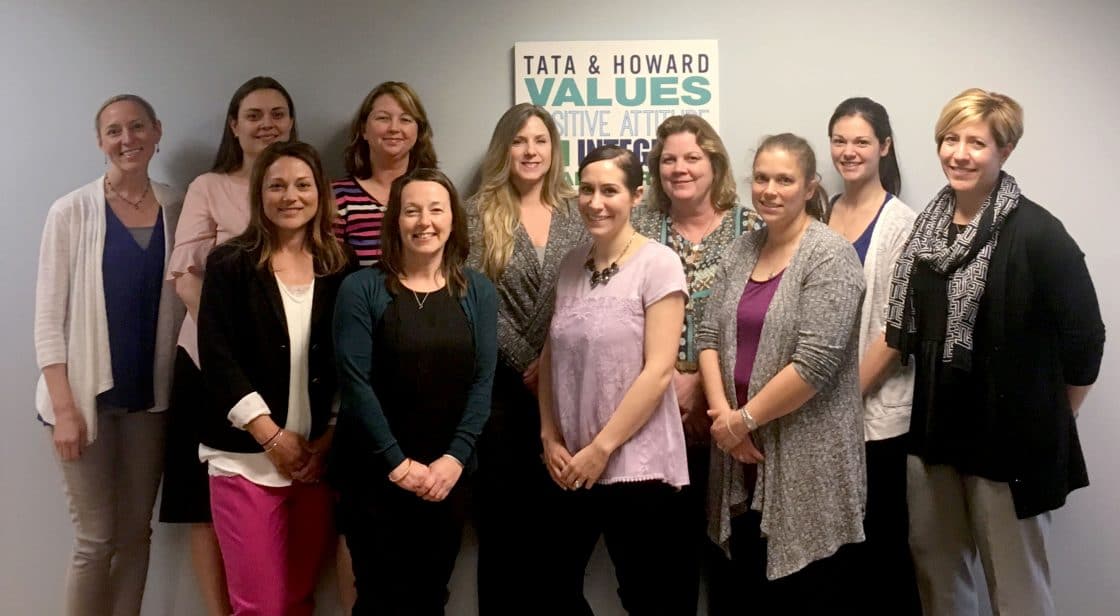
 Christine Beliveau, Environmental Specialist, has been with the firm since 2012. Chrissie provides full administrative support to the Environmental Group as well as assists with a variety of other administrative and marketing functions. Chrissie is known throughout the company as the go-to person for any and all things Microsoft Word, and she maintains our company’s resume and project database. When she isn’t working, she enjoys spending time with her husband, adult daughter, and young grandson.
Christine Beliveau, Environmental Specialist, has been with the firm since 2012. Chrissie provides full administrative support to the Environmental Group as well as assists with a variety of other administrative and marketing functions. Chrissie is known throughout the company as the go-to person for any and all things Microsoft Word, and she maintains our company’s resume and project database. When she isn’t working, she enjoys spending time with her husband, adult daughter, and young grandson. Justine Carroll, P.E., Project Manager, has been with the firm since she graduated from Tufts University with a Masters of Science in Environmental and Water Resource Engineering in 2006. Justine serves as Team Leader for the Hydraulics Group and has expertise in hydraulic modeling. She is certified in WaterGEMS and InfoWater modeling software and holds training certifications in ESRI – ArcGIS Desktop II and III. Even though she is a busy working mom, Justine still finds time to spend with her young daughter and to volunteer as a swim coach for Special Olympics.
Justine Carroll, P.E., Project Manager, has been with the firm since she graduated from Tufts University with a Masters of Science in Environmental and Water Resource Engineering in 2006. Justine serves as Team Leader for the Hydraulics Group and has expertise in hydraulic modeling. She is certified in WaterGEMS and InfoWater modeling software and holds training certifications in ESRI – ArcGIS Desktop II and III. Even though she is a busy working mom, Justine still finds time to spend with her young daughter and to volunteer as a swim coach for Special Olympics. Amanda Cavaliere, Project Manager, has been with the firm since 2003, and serves as Team Leader for the Water System Improvements Group. She has specialized expertise in water and wastewater system designs as well as experience with site remediation and surveying. When she isn’t managing projects, she enjoys spending time with her son and daughter.
Amanda Cavaliere, Project Manager, has been with the firm since 2003, and serves as Team Leader for the Water System Improvements Group. She has specialized expertise in water and wastewater system designs as well as experience with site remediation and surveying. When she isn’t managing projects, she enjoys spending time with her son and daughter. Karen Gracey, P.E., one of our two Co-Presidents, has been with the firm since graduating from the University of Vermont in 1998. She has specialized expertise in water system design, having completed over 25 hydraulic models and holding certifications in both WaterGems and InfoWater software. She also has extensive experience managing the firm’s Business Development activities. Even though she has a lot on her plate running the firm alongside Jenna Rzasa, she still finds time to bring her daughter to gymnastics and to spend time at the Cape with her family.
Karen Gracey, P.E., one of our two Co-Presidents, has been with the firm since graduating from the University of Vermont in 1998. She has specialized expertise in water system design, having completed over 25 hydraulic models and holding certifications in both WaterGems and InfoWater software. She also has extensive experience managing the firm’s Business Development activities. Even though she has a lot on her plate running the firm alongside Jenna Rzasa, she still finds time to bring her daughter to gymnastics and to spend time at the Cape with her family. Patricia Kelliher, Project Engineer, has been with the firm since she graduated from the University of Massachusetts, Amherst, in 2010. At that time, Trish was splitting her time between Tata & Howard and the New England Patriots, for whom she was a cheerleader. Since then, she has retired from cheering, gotten married, and had a daughter, who keeps her on her toes when she isn’t designing water mains.
Patricia Kelliher, Project Engineer, has been with the firm since she graduated from the University of Massachusetts, Amherst, in 2010. At that time, Trish was splitting her time between Tata & Howard and the New England Patriots, for whom she was a cheerleader. Since then, she has retired from cheering, gotten married, and had a daughter, who keeps her on her toes when she isn’t designing water mains. Maria Maynard, Manager of Human Resources, has been with the firm since 2008, and is responsible for all of our recruiting efforts and employee benefits. With over 65 employees, Tata & Howard keeps her very busy — as do her teenaged sons! Maria is an avid CrossFitter, and enjoys running alongside her beloved Pitbull mix, Ruby.
Maria Maynard, Manager of Human Resources, has been with the firm since 2008, and is responsible for all of our recruiting efforts and employee benefits. With over 65 employees, Tata & Howard keeps her very busy — as do her teenaged sons! Maria is an avid CrossFitter, and enjoys running alongside her beloved Pitbull mix, Ruby. Carmen Perkins, Senior Administrative Assistant, has been with the firm for 11 years. She handles not only administrative tasks, but also helps out the accounting department. If there is ever a question where something can be found, ordered, invoiced, or mailed, Carmen has the answer! In her spare time, she enjoys spending time with her two adult daughters.
Carmen Perkins, Senior Administrative Assistant, has been with the firm for 11 years. She handles not only administrative tasks, but also helps out the accounting department. If there is ever a question where something can be found, ordered, invoiced, or mailed, Carmen has the answer! In her spare time, she enjoys spending time with her two adult daughters. Jenna Rzasa, P.E., our other Co-President, has been with the firm since she graduated from Worcester Polytechnic Institute in 1997 and has specialized expertise in water system design. She is also a financial guru who manages Tata & Howard’s financials and accounting. When she isn’t busy running the business alongside Karen, she can be found watching her son’s track meets or running a few miles herself.
Jenna Rzasa, P.E., our other Co-President, has been with the firm since she graduated from Worcester Polytechnic Institute in 1997 and has specialized expertise in water system design. She is also a financial guru who manages Tata & Howard’s financials and accounting. When she isn’t busy running the business alongside Karen, she can be found watching her son’s track meets or running a few miles herself. Allison Shivers, P.E., Project Engineer, joined the firm just a few months ago, and is already an invaluable member of the team. She has targeted expertise in wastewater system design, and she splits her time between our Lakeville and Marlborough offices. When she isn’t working, she enjoys spending time with her husband and two daughters.
Allison Shivers, P.E., Project Engineer, joined the firm just a few months ago, and is already an invaluable member of the team. She has targeted expertise in wastewater system design, and she splits her time between our Lakeville and Marlborough offices. When she isn’t working, she enjoys spending time with her husband and two daughters. Evelyn Sistak, Administrative Assistant, joined the firm in 2016. Originally from Florida, she is still getting used to the temperamental New England weather. Evelyn handles all things administrative, and is always willing to lend a helping hand whenever she is asked. When she isn’t at work, Evelyn enjoys spending time with her young daughter, who loves everything pink and purple.
Evelyn Sistak, Administrative Assistant, joined the firm in 2016. Originally from Florida, she is still getting used to the temperamental New England weather. Evelyn handles all things administrative, and is always willing to lend a helping hand whenever she is asked. When she isn’t at work, Evelyn enjoys spending time with her young daughter, who loves everything pink and purple. Mary Vermes, Senior Staff Accountant, has been with the firm since 2010 and handles all aspects of the firm’s accounting. She is an integral part of the inner workings of the firm, and if it’s accounting-related, Mary will have the answer! When she isn’t crunching numbers, she is getting ready to welcome her first grandchild.
Mary Vermes, Senior Staff Accountant, has been with the firm since 2010 and handles all aspects of the firm’s accounting. She is an integral part of the inner workings of the firm, and if it’s accounting-related, Mary will have the answer! When she isn’t crunching numbers, she is getting ready to welcome her first grandchild. Heidi White, Marketing Communications Manager, has been with the firm since 2012 and handles the firm’s marketing activities. When she isn’t busy preparing proposals or writing blogs like this one, she enjoys kickboxing and spending time with her husband, two young adult sons, and three Yorkshire Terriers. She is also an avid runner who has run to raise money for the Jimmy Fund for the past six years.
Heidi White, Marketing Communications Manager, has been with the firm since 2012 and handles the firm’s marketing activities. When she isn’t busy preparing proposals or writing blogs like this one, she enjoys kickboxing and spending time with her husband, two young adult sons, and three Yorkshire Terriers. She is also an avid runner who has run to raise money for the Jimmy Fund for the past six years.
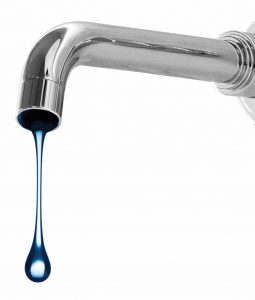 As Drinking Water Week continues, T&H joins the American Water Works Association and water professionals across North America in encouraging homeowners to check and fix leaks inside and outside the home.
As Drinking Water Week continues, T&H joins the American Water Works Association and water professionals across North America in encouraging homeowners to check and fix leaks inside and outside the home.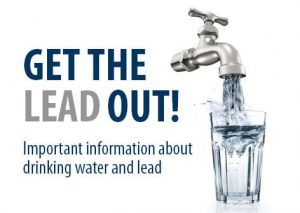 As Drinking Water Week continues, Tata & Howard joins the American Water Works Association and water professionals across North America in encouraging households to identify and replace lead-based water pipes and plumbing. Lead presents health concerns for people of all ages, particularly pregnant women, infants, and young children. In children, low exposure levels have been linked to learning disabilities, behavioral problems, and other issues.
As Drinking Water Week continues, Tata & Howard joins the American Water Works Association and water professionals across North America in encouraging households to identify and replace lead-based water pipes and plumbing. Lead presents health concerns for people of all ages, particularly pregnant women, infants, and young children. In children, low exposure levels have been linked to learning disabilities, behavioral problems, and other issues. Tata & Howard, the American Water Works Association (AWWA), and water professionals across North America are kicking off Drinking Water Week today with the theme “Your Water – To Know It Is To Love It”.
Tata & Howard, the American Water Works Association (AWWA), and water professionals across North America are kicking off Drinking Water Week today with the theme “Your Water – To Know It Is To Love It”.